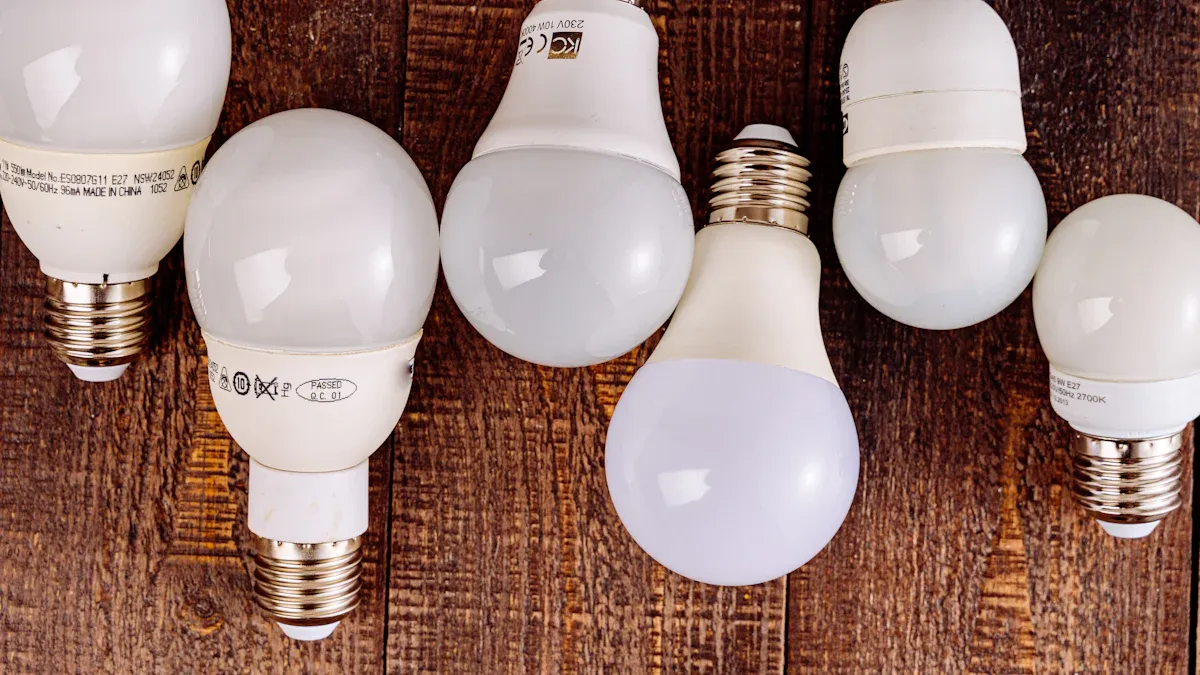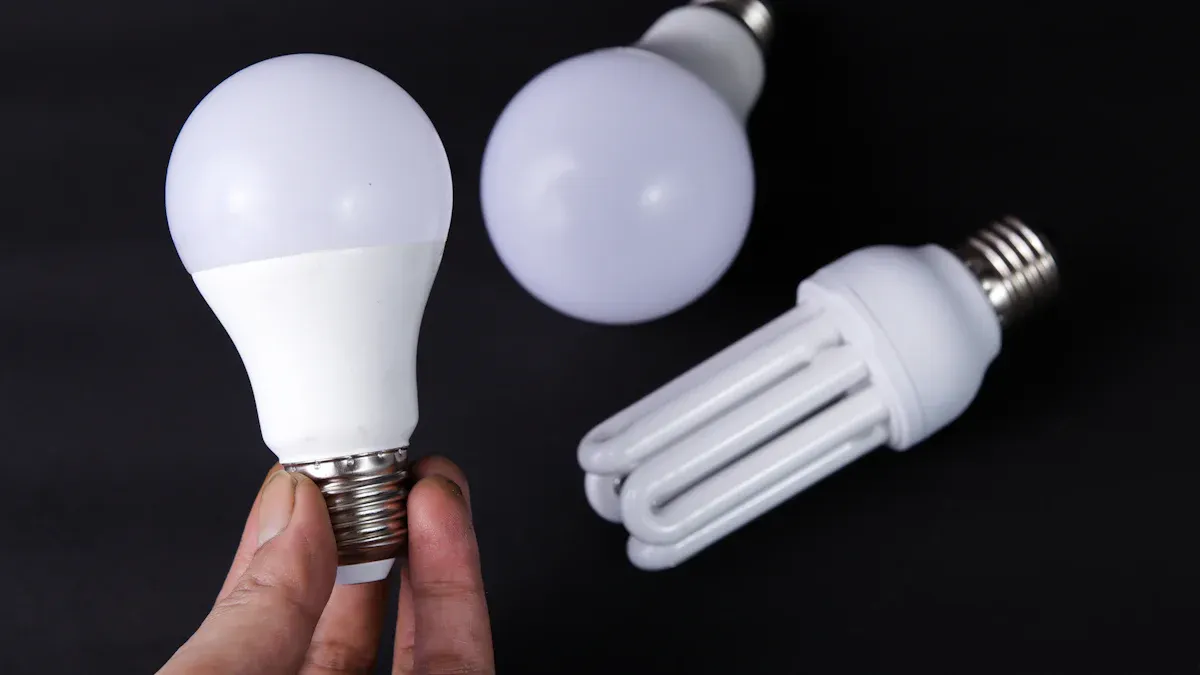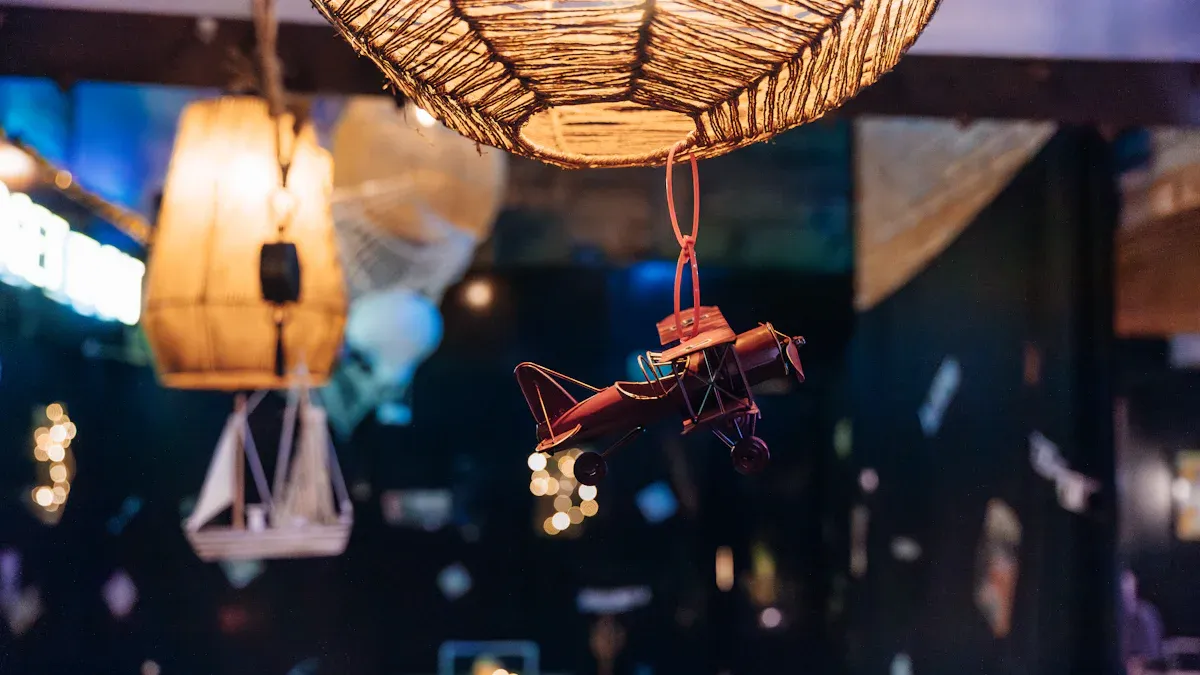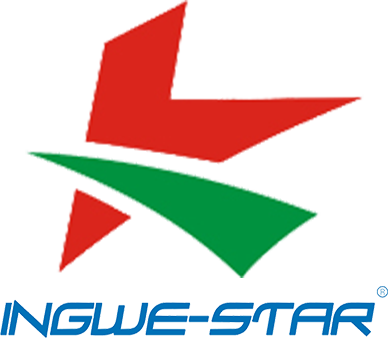Selecting the Right Illumination Technology for Your Products

You need the right illumination technology to get the best results. Lighting choice affects how your product works and looks. When you match lighting to your product, you save energy. You also get better lighting quality and help the environment. A recent study shows LED lighting works better than other options. This is true when you pick the right electrical and photometric needs. Your experience with lighting design and healthcare lighting will improve with good lighting. Good choices help you meet technical and practical needs. This leads to better lighting solutions every time.
Key Takeaways
Picking the right lighting makes your products look better and work well. It also helps save energy. LED lighting lasts a long time and uses less power. It gives you many choices for color and control. Make sure the lighting fits your product’s material, shape, and where it will be used. This helps you get the best results. Use high color rendering index (CRI) lights to show real colors. This can help bring in more customers. Follow a checklist and use tools to choose safe and good lighting. This will help you pick lights that work well and save energy.
Why Illumination Matters
Product Performance
The lighting you pick changes how people see your products. Good lighting helps your products look nice and stand out. In stores, warm lighting makes things feel cozy. Cool lighting gives a modern look. Spotlights can make certain items stand out more. The right lighting helps people see better and makes colors look brighter. This lets customers notice small details and enjoy their visit.
Lighting technology can make products last longer and make users happier. Anti-glare and anti-reflective coatings stop glare and reflections. This keeps screens clear, even when it is bright or the light changes. Backlight assemblies with advanced LEDs spread light better and use less energy. Tempered glass and special films protect your products from damage. These features help your products work well for a long time. Customers are happier and your products work better.
Tip: If you match the lighting to your product, users see details better and have a nicer time.
Quality and Compliance
You have to follow rules when picking lighting for your products. Many jobs need you to meet safety and performance rules. The ATEX Directive and IECEx System give rules for lighting in places with explosions. UL and CSA standards are for safe lighting in North America. In the United States, FCC rules cover radio waves from LED lighting.
You need to check your lighting for quality. You must test for brightness, color, and safety. Meeting these rules helps you avoid trouble and makes sure your products work well. Studies show that tunable-white LED systems can save up to 46% energy each year. These systems let you change the lighting for different jobs. This makes things safer and more comfortable for users.
Product Requirements
Material and Surface
You should check what your product is made of before picking lighting. Shiny surfaces can make glare if you use the wrong light. Dome lights give soft light and work well for curved or shiny things. Bar lights are good for lighting big, flat areas. If your product has small marks or scratches, dark field illumination helps you see them. Backlight illumination is best for checking the shape or size of something. The color of the light is important too. Red light helps stop glare. Blue light shows small details on dark things. Ultraviolet or infrared lighting can help you find hidden things or contamination.
Tip: Always pick the right lighting for the surface to get the best results.
Shape and Color
The shape and color of your product change how you use lighting. If your product has a special shape, you need even light to stop dark spots. Brightness helps show off special parts. Color temperature, measured in Kelvins, changes how people see your product. Warm light feels cozy. Cool light helps show details. High color rendering index (CRI) lighting lets people see real colors. This is important for things like clothes or jewelry. In stores, a CRI of 95 or more makes products look their best. Task lighting helps you focus on certain parts and makes them stand out.
Environment
Where you use your lighting changes how well it works. Temperature and humidity can make your lighting last less time. High heat can make parts break faster and use more energy. Humidity can also make lighting not last as long. For example, offices work best at about 21°C and 1000 lux. This helps people work better and feel good. If you use lighting in hot or wet places, pick products made for those spots. You should also think about safety rules, especially for emergency exits or paths. Smart lighting can help you save energy and change brightness when needed.
Environmental Factor | Impact on Lighting Performance |
|---|---|
Temperature | Can make parts break early and use more energy |
Humidity | Can make lighting not last as long and work worse |
Illumination Technology Types

LED Lighting
LED lighting is used in many new products. This technology uses less energy than old lights. LEDs last a long time, from 20,000 to 100,000 hours. They only use about 8 watts. Incandescent bulbs can use up to 90 watts. LEDs do not get very hot, so they are safer and save energy. There are many types of LED fixtures. You can pick ring lights, backlights, or multi-channel illuminators. These help you get bright and even light. You can also choose different colors and control the light easily. LED lighting works well for displays, machine vision, and checking products.
Lighting Type | Lifespan (hours) | Power Consumption (watts) | Heat Emission (% energy) |
|---|---|---|---|
Incandescent | 750 - 2,000 | 60 - 90 | Up to 90% |
Halogen | 2,000 - 4,000 | 90 | 80 - 90% |
CFL | 8,000 - 30,000 | 14 | 30 - 80% |
LED | 20,000 - 100,000 | Around 8 | 10 - 20% |
Tip: Pick LED lighting if you want to save energy and have lights that last a long time.
Fluorescent
Fluorescent lighting gives bright and even light over big areas. You see these lights in offices, schools, and warehouses. They cost less at first and light up large spaces well. Fluorescent lights are good for steady, wide lighting. But they do not last as long as LEDs. They can also have trouble in cold or wet places. Fluorescent lights have mercury inside. You must be careful when you throw them away.
Halogen and Incandescent
Halogen and incandescent lights show colors very well. This is good for showing products. Halogen lamps last longer than regular incandescent bulbs. They give you different color temperatures. But these lights use more energy and make a lot of heat. You need to think about heat and safety. These lights are best when you need true colors more than saving energy.
Lighting Type | Advantages | Disadvantages |
|---|---|---|
Incandescent Lamp | Closest to natural light, great color | Low energy efficiency, short life |
Halogen Lamp | High color rendering, longer life | Generates heat, disposal concerns |
Fiber Optic
Fiber optic lighting is very flexible. You can bend and move the cables in many ways. This is good for tricky products or places that need exact light. Fiber optic lights do not make heat at the spot they light up. This keeps sensitive things safe. You see fiber optic lights in medical tools, machine vision, and special displays. They cost more, but they help you light hard-to-reach spots.
Specialty Options
Some products need special lighting. Specialty lights include LED strip lights, troffers, high bay lights, and tunnel lights. You can change these lights for power, color, and controls. Specialty lighting is good for sports fields, dangerous places, and billboards. You can ask experts to help you pick and set up the right lights.
Note: Specialty lighting must follow strict rules for safety and quality.
Lighting Methods

Backlighting
Backlighting helps your products stand out. This method shines light from behind your product. It makes graphics and displays look bright and clear. Backlighting makes it easier to see details in pictures and words, even in bright rooms. You often see backlighting at trade shows and in stores. It draws people’s eyes to your products and special deals. Backlighting gives displays a neat and professional look. When you use backlighting, customers notice important features. This makes shopping better for them. Studies show that bright products get more attention and help sales go up.
Backlighting makes graphics bright and easy to notice.
It helps people see your products from far away.
This method shows off product details and special offers.
Backlighting gives your display a clean and strong look.
Diffuse and Specular
It is important to know about diffuse and specular lighting. Diffuse lighting spreads light evenly on rough or bumpy surfaces. This stops shiny spots and gives things a soft look. Specular lighting makes sharp, mirror-like reflections on smooth surfaces like chrome. This makes products look shiny and glossy. Picking the right lighting changes how your products look in photos or on display.
Specular lighting is good for smooth, shiny things.
Diffuse lighting works well for fabric, paper, or soft-looking surfaces.
Accent lighting can make certain parts stand out and look interesting.
Task lighting helps you see important product parts better.
Lighting Method | Description | Typical Applications |
|---|---|---|
Diffuse Dome Light | Lights up from almost all directions, covering a big area | Works well on shiny, curved, and bumpy surfaces |
Coaxial Light | Shines light in line with the camera and covers a big area | Good for shiny, flat, and slanted surfaces of different heights |
Flat Diffuse Light | Very soft light with a spot to look through, can be used in front or as a projector | Great for checking PCBs and surfaces that need even light |
Homogeneous Illumination
Homogeneous illumination gives even light everywhere on your product. This method gets rid of shadows and dark spots. It makes every part easy to see. Homogeneous illumination is used in machine vision lighting and checking product quality. It helps you find problems and measure things correctly. You can use flat diffuse lights or dome lights to get this effect. Homogeneous illumination works well with accent lighting and ambient lighting for a balanced look. You can also use task lighting with homogeneous illumination to focus on important spots while keeping everything visible. Good lighting and the right methods help you check and show products in the best way.
Tip: Use homogeneous illumination with accent lighting and ambient lighting to help your products look great anywhere.
Lighting Selection Factors
When you pick lighting for your products, you must think about a few key things. These are color temperature, CRI, energy use, and how you control the lights. Each one helps you get the best lighting for your needs. Picking the right lighting makes your products look better and saves power.
Color Temperature
Color temperature changes how people see your products. It is measured in Kelvins (K). Warm light makes things look soft and cozy. Cool light makes details look sharp and clear. The right color temperature helps your products stand out. It also makes customers feel good.
Color Temperature Range | Effect on Product Appearance | Impact on Consumer Perception and Behavior | Typical Retail Application |
|---|---|---|---|
Warm Light (2,000K–3,000K) | Makes fabrics look rich and softens skin | Feels cozy and relaxing; people stay longer | Fashion stores, fancy shops, fitting rooms |
Neutral Light (3,500K–4,500K) | Keeps food looking natural and white | Good for seeing well and feeling comfy | Grocery stores, big stores, supermarkets |
Cool Light (5,000K–6,500K) | Makes details clear and shiny | Helps people focus and feel awake | Electronics stores, jewelry shops, hardware stores |
A study found that color temperature and color rendering change how people see fruits and vegetables. Using the right color temperature makes your products look better. This helps customers feel happy and may make them stay longer.
Tip: Use layers of light and brightness control with the right color temperature to make products look great and help customers feel good.
CRI
The Color Rendering Index (CRI) shows how well a light shows real colors. High CRI lights make colors look bright and true. If you use lights with a CRI of 90 or more, customers see the real color of your products. This matters a lot in clothing stores, art places, and healthcare.
Two lights with the same color temperature can show colors in different ways. For example, a 5000K LED lamp without enough red can make a red apple look dull. High CRI lighting fixes this. It helps your products look bright and real. This makes your lighting choice better and stops you from tricking customers.
Note: High CRI lighting cuts down glare and helps people see better while saving energy.
Energy Efficiency
Energy-efficient lighting saves money and helps the planet. When you pick energy-saving lights, you use less power and pay less. Your products also last longer. There are many types of energy-saving lights you can pick:
LED lighting: Uses less power, lasts long, and gives you many choices.
CFL bulbs: Save up to 80% energy and last much longer than old bulbs.
Solar-powered lights: Use sunlight for power, good for outside.
Smart lighting systems: Use sensors and timers to save up to 35% energy.
Daylight harvesting systems: Mix sunlight and electric light to save up to 60%.
Task lighting: Shines light where you need it, saving up to 50% on bills.
LEDs are now used in many products. They use less power and last longer than old bulbs. You can also get solar-powered LED lights for outside. Smart and task lighting help you use power only where you need it. This makes your lighting choice smart and saves money.
Tip: Always pick certified energy-saving lights to meet rules and save more power.
Control Options
Modern lighting lets you control lights in many ways. These controls help you change lights for different needs and save power. You can use wireless systems, apps, or voice to control your lights. You can also set up zones and scenes for different spaces.
Adjustable LED systems let you pick bright or dim light.
RGB LEDs give you many color choices for mood or style.
Tunable white LEDs copy natural light for health.
Modular lights let you move and change lights as you need.
Wireless controls work with apps or voice for easy use.
Zoned lighting lets you control different areas by themselves.
Timers and sensors help you save power by turning lights on or off.
Scene control lets you set up lights for special events or jobs.
Dimming and color changing help you set the right mood.
These controls make your lighting flexible and smart. You can change lights for different times or tasks. You can also connect lights with music or security. This helps you get the most from your lighting and save power.
Note: Good controls help you use task, ambient, and energy-saving lighting together for the best results.
Right Lighting for Applications
Retail
You need good lighting to make shopping better. Using different lights helps show off products. LED strip lights under shelves make displays glow evenly. This glow makes people notice the products. Spotlights can shine on special items to make them stand out. Bright signs and logos help people see your brand from far away. Smart lighting lets you change how bright or warm the lights are. You can do this when more people come in or at different times. Lights that you can program or that turn on with movement save power. High CRI lighting makes colors look real and bright. This helps shoppers see what products really look like. Stores like Nike use many kinds of lights and cool effects. These tricks make shopping fun and keep people coming back.
Industrial
The right lighting keeps workers safe and helps them work well. Use big lights to light up large spaces. Use task lighting for work tables and machines. Good lighting can stop about 30% of accidents. Bright and even lights help workers see better and make fewer mistakes. Hanging lights with the right color temperature, like 4000K to 5000K, keep workers awake. Task lights that you can move or change help with different jobs. Motion-sensor lights turn on only when needed. This saves energy and keeps people safe. Special lights can handle wet or dangerous places. Good lighting makes workers feel better and less tired. This helps everyone work safer and faster.
Machine Vision
Machine vision lighting helps you check products the right way. The best light depends on where and what you are checking. You can pick LED, fluorescent, quartz halogen, metal halide, or xenon lights. The shape, color, and filters change how well you see things. Dome lights give even light with no shadows for round items. Coaxial lights cut down glare on flat things. Ring and bar lights help you see details by making contrasts stronger. Pattern projectors help you look at 3D shapes. The light’s color should match your camera for better results. You also need to think about other lights in the room and space limits. The right machine vision lighting gives you good results, even if things move or the room changes. Task and accent lights help you spot problems or special features.
Product Presentation
Lighting changes how people see your products. Most things people notice come from what they see. Use soft lights to set the mood and accent lights to show off special parts. High CRI lighting makes colors look bright and true. In ads, virtual tours use lighting to show products clearly, even from far away. TUNABLE WHITE and REALWHITE let you change the light to match product colors. This makes the room feel nice. Accent and task lights make special features stand out and help people stay longer. Good lighting mixes style and use. This makes products look better and helps sell more. In healthcare, good lighting also helps staff and patients feel safe and comfortable.
Decision Tools
Selection Checklist
A checklist can help you pick the right lighting. It makes the process easier and helps you remember every step. You will not miss anything important if you use a checklist. It guides you from the start to the end of your project.
Decide what you want and how much you can spend.
Look at the place and see what lights are already there.
Think about how you want your lights to look.
Figure out how much light you need and if you can use sunlight.
Pick the fixtures and check if they follow the rules.
Plan for controls like dimmers or sensors to save power.
Work with the electrical plans and make sure you follow the rules.
Write down your choices and explain them clearly.
Watch the installation and check for any problems.
Make a plan to keep the lights working well and check them after people start using them.
Tip: Always check your lighting after people use the space to see if it works well in real life.
You should also think about things like certification, how well the lights work, how strong they are, and how easy they are to fix. The table below shows what to look for with each thing:
Essential Element | Description |
|---|---|
Certification | Make sure the lights have labels from trusted groups. |
Photometric Performance | Use real numbers to compare lights and stop glare. |
Durability | Check if the lights can handle damage, weather, or people breaking them. |
Maintenance | Make sure you can reach the lights easily and fix them often. |
Operations Cost | Think about how much energy the lights use and how much they cost over time. |
Ingress Protection | Use IP65 or IP66 lights to keep out dust and water. |
Decision Matrix
A decision matrix helps you compare different lights for your product or area. You write down your choices and give them scores for things like saving energy, price, how long they last, and color quality. You can also make some things count more if they are more important to you.
Criteria | LED | Fluorescent | Halogen | Fiber Optic |
|---|---|---|---|---|
Energy Efficiency | 5 | 3 | 2 | 4 |
Cost | 4 | 5 | 3 | 2 |
Lifespan | 5 | 3 | 2 | 4 |
Color Quality | 5 | 4 | 5 | 4 |
Maintenance | 5 | 3 | 2 | 4 |
You multiply each score by how important it is, add them up, and see which light is best for you. This way works for both checking by hand or with machines. Using a tool like this helps you make better choices and pick the best lighting for any job.
Picking the right illumination technology makes your products work well and look nice. First, think about what your product needs. Look at different lighting types and ways to use them. Follow the checklist to help you decide. Using the best lighting improves quality and uses less energy. If you are not sure, ask a lighting expert for help.
Remember: Good lighting helps your products get noticed and keeps users pleased.
FAQ
What is the best lighting technology for saving energy?
You should choose LED lighting. LEDs use less power and last longer than other types. They also give you many options for color and brightness. This makes them a smart choice for most products.
How does lighting affect product appearance?
Lighting changes how people see colors and details. High color rendering index (CRI) lights help your products look true to life. The right color temperature can make your products look warm or cool, depending on what you want.
Can I use the same lighting for all environments?
No, you need to match lighting to the environment. Wet or hot places need special lights. For example, healthcare lighting solutions must meet strict safety rules. Always check the requirements for your space before choosing.
Why is CRI important in lighting selection?
CRI shows how well a light shows real colors. High CRI lights help people see products clearly. This is very important in stores, art displays, and healthcare. You should look for lights with a CRI of 90 or higher.
What are the benefits of smart lighting controls?
Smart lighting controls let you change brightness, color, and timing. You can save energy and make spaces more comfortable. These systems work well in homes, stores, and healthcare settings.
See Also
Selecting The Best LED Display Sign For Your Company
Finding The Ideal LED Digital Sign For Business Use
Uses And Advantages Of Acrylic Light Boxes Explained

